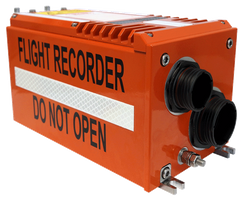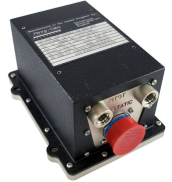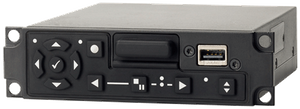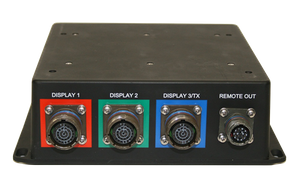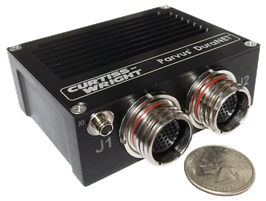Avionic
Telemetry
Systems
AVIONICS
Flight Data / Cockpit Recorders
Curtiss-Wright has been manufacturing crash protected recorders since 1957, was the first to bring a combined cockpit voice/flight data recorder (CVR/FDR) to market in 1986 and the first to obtain RTCA-DO-178 approval for solid state recorders. Today, we manufacture the most flexible, compact and lightweight ED-112A compliant recorders available.
Fortress 757 provides a complete aircraft recording solution supporting parametric flight data at rates of 64/128/256/512/1024/2048/4096 words-per-second for a minimum of 25 hours, 4 channels of cockpit voice recording, CPDLC recording, image recording and cockpit display recording each for 2 hours minimum.
Fortress 757 is designed in accordance with RTCA/DO-178C and RTCA/DO-254. It meets all current and anticipated FAA and EUROCAE requirements and has a 90 day ultrasonic locator beacon (ULB), certified to TSO-C121b. The core memory is expandable to support up to EUROCAE class 6 recorder requirements for 25 hours recording capacity.
Air Data Unit
The Enhanced Software Configurable Air Data Unit (ESCADU) is intended to be the primary supply of air data parameters to the aircraft systems. The ESCADU calculates the air data parameters from information received from the integrated pitot and static pressure sensors and an outside air temperature probe. This computed information is supplied to other aircraft systems via an ARINC 429, analog DC or discrete signals.
Traditional rotary installations have required mechanical dampening in order to remove the effects of rotor-wash from the display screens. The ESCADU is able to counter this by using electronic filtering to negate this effect, reducing cost of ownership by reducing weight and removing maintenance issues for the operators.
Airborne LCD Displays
With dual-LED backlights, selectable daylight and night vision goggle (NVG) mode, very high brightness and high contrast, they are readable in all light conditions, providing anytime readability. These rugged, HD, airborne-qualified mission displays are ideal for use with our fully integrated video management system (VMS).
Display Families Overview
AVDU displays are great for large video systems with several video inputs, on-screen VMS control and built-in video processing functions such as quad-view and picture in picture.
SVDU displays are perfect for medium sized video systems that require excellent video quality, only 1 or two video inputs and do not need video processing (windowing).
PVDU displays can be used in small video systems that require a computer and display combined into a single unit.
GVDU displays have been developed specifically for high volume (typically vetronics) markets and are customized to program requirements, offering a cost optimized solution without any wasted or unused functionality or capabilities.
Video Recorders
Curtiss-Wright’s range of video recorders allows one or more video streams to be recorded for debrief, training or evidential purposes. A recorder may be connected to a video distribution unit to allow selection of a specific video stream to be captured, or to the output of a mission display to enable an accurate copy of the screen content seen by the operator to be recorded. Widely available flash storage technology is used for easy removal of recordings at the end of a mission for transfer onto computer or permanent archiveCurtiss-Wright’s range of video recorders allows one or more video streams to be recorded for debrief, training or evidential purposes. A recorder may be connected to a video distribution unit to allow selection of a specific video stream to be captured, or to the output of a mission display to enable an accurate copy of the screen content seen by the operator to be recorded. Widely available flash storage technology is used for easy removal of recordings at the end of a mission for transfer onto computer or permanent archive
Video Distribution System
Curtiss-Wright offers a variety of video distribution, management, and switching products to meet demanding applications. These products include board level and fully-configured turnkey solutions to meet your rugged deployed program requirements.
Curtiss-Wright’s industry-leading Video Management System (VMS) offers complete surveillance solutions for airborne and other applications. The VMS includes scalable rugged displays, video distribution and recording equipment. The VMS components are highly interoperable and easy to install and reconfigure. As a fully integrated system, VMS uses the touch-screen technology on Curtiss-Wright displays to enable pilots and observers to independently select, view and record images with no signal loss from multiple camera and sensors. In addition, video transmission downlink via microwave is available.
DuraCOR Mission Computers
Curtiss-Wright’s rugged Commercial-Off-the-Shelf (COTS) mission computer subsystems feature modular, expandable designs with powerful graphics and data processing capabilities together with ultra-reliable mechanical robustness —engineered from the inside out to address size, weight, and power-cost (SWaP-C), reliability, and budget requirements so customers can deploy a fully-functional, environmentally-hardened subsystem tailored to specific needs — in a matter of weeks.
These field-tested, MIL-STD / DO-160 qualified mission processorst features electrical/ mechanical I/O expansion capabilities that enable rapid integration of payload-specific I/O interfaces for avionics. With pre-integrated, pre-qualified subsystems tailored by the factory, DuraCOR customers dramatically reduce scheduling risk and program management overhead, while maximizing COTS.
DuraNET Network Switches / Routers
Rugged switches and routers enable mobile networks on-board vehicle and aircraft platforms to securely and affordably deploy digital network architecture.
Optimized for the size, weight and power (SWaP) constraints of civil and military platforms. From simple, plug-and play unmanaged Layer 2 switches to high-bandwidth managed Layer 3 Gigabit / 10 Gigabit solutions and even ruggedized Cisco IOS technology-based options.
